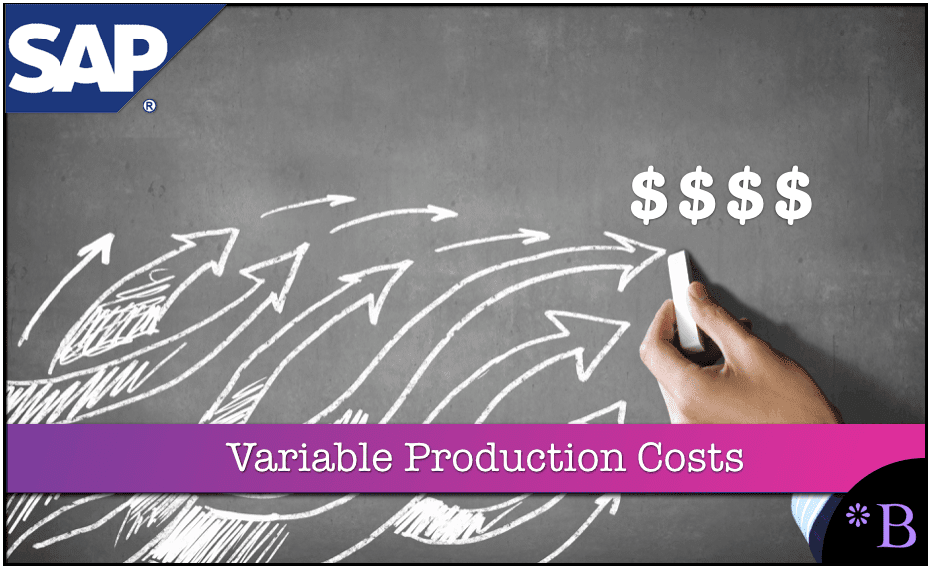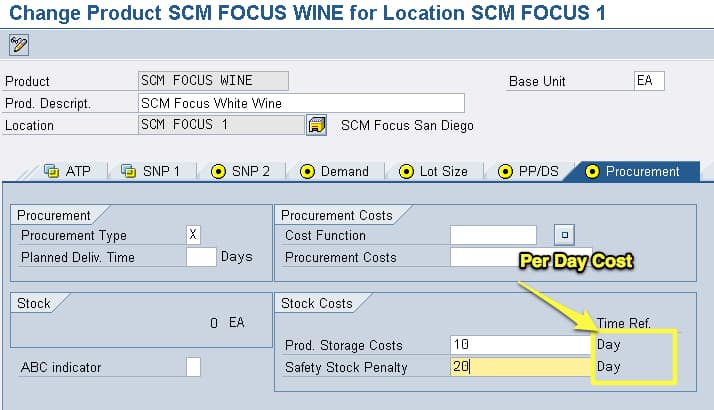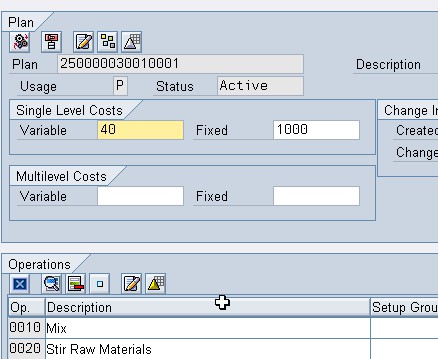How to Understand Fixed and Variable Production Costs in SNP and PP/DS
Executive Summary
- There are fixed and variable production setup costs for SNP and PP/DS.
- We cover how they are used and, what fixed and variable production costs are frequently set up in practice.
- We cover how well setup costs are maintained on projects.

Introduction to Fixed Costs and Variable Production Costs in SAP SNP and SAP PP/DS
A common need is to set up production costs in the production system to be picked up by the optimizer. These are fixed and variable production costs. In this example, I will be using the PPM or Production Process Model.

Notice that both storage and safety stock penalty costs are declared a daily value in the Location Product Master interface. While SNP uses them, these costs relate to production planning.
Our References for This Article
If you want to see our references for this article and other related Brightwork articles, see this link.
Notice of Lack of Financial Bias: We have no financial ties to SAP or any other entity mentioned in this article.
How Fixed and Variable Production Costs Are Used by the Optimizer
Both fixed and variable costs can be set up in the PPM (production process model). The higher the fixed costs versus the variable costs, the more incentives for long production runs and vice versa. Both fixed costs and variable costs should match, roughly speaking, reality. The fixed cost and variable cost should not be adjusted to change the production run duration.
Secondly, these same fixed and variable costs can be set up for either single-level or multilevel. The single level applies to SNP, and the multi-level applies to PP/DS. Different PPMs can be set up with different costs, which are then selected by the optimizer.
Most companies that I have worked with set a single cost per line in their factory, represented by the PPM. So if there are four lines in a factory and ten products made per line, there would be 40 PPMs, each with their own cost. However, this is just one way to perform the setup; there are many ways to perform a setup.
What the Costs Mean for Production Planning
The majority of costs that are used by the optimizer to calculate a planned output are a variable cost. This applies to the cost of a missed demand, the costs of violating safety stock, storage costs, and transportation costs.
Therefore the cost is set per the basic unit of measure in the planning system, and the costs are incurred per day outcome occurs. For instance, SNP’s storage costs are incurred per unit of measure (case, drum, etc.) per day. So if the storage costs are 50 cents per day per drum, and there are 100 drums stored for ten days, then the storage costs incurred would be $500. This applies to almost all the costs used by the optimizer.
Fixed Costs and Variable Production Costs in Production Planning
However, production costs offer the exception to this rule. A PPM offers both a fixed and variable cost. So if the variable cost is $40 per barrel and the fixed costs (which could be the setup costs combined with the downtime costs) was $1000, and 100 barrels were produced, then the cost would be $1000 + (40 x $100 = $4000) or $5000.
If I wanted to set up the PPM this way, I would set it up as the following:

Production Planning Cost Comparison in the Optimizer
The optimizer can compare the storage costs against the production costs, and the other three major costs in the SNP (transportation, safety stock, cost of missed demand). For PP/DS, these are not the relevant costs for the optimization. Also, there is an overlap with the fixed costs and the Setup Matrix, which is a more sophisticated way of setting the costs and time of moving from one product to another.
However, given the long-running problems with the Setup Matix, this can be a way of getting around Setup Matrix. (The Setup Matrix is described in detail in this article) However, the functionality of a variable cost per production, which does not consider the next item to be run, is far lower than the hypothetical functionality of the Setup Matrix. But the Setup Matrix functionality is just hypothetical.
How it is Frequently Done in Practice
While most clients I have seen only populate one cost, either variable or fixed, in fact, it makes a lot more sense to enter values in both fields. The fixed costs provide a predisposition against making a production order, which is traded off against the storage costs. In fact, both the fixed costs and the minimum lot size predisposition the system against creating production orders, so the fixed cost in the PPM and the lot size should be seen as working in conjunction with one another.
Conclusion
The production costs settings are critical and generally not well set up or well thought through. This results in less efficient production planning. One obvious improvement is to populate both fixed and variable values. They should also be somewhat realistic.
There is a strong tendency in cost optimization to enter completely phony costs. When this happens, the costs become divorced from reality, which leads to negative long-term implications for advancing the solution. However, attempting to get them to be perfect is also not a very good use of time. This topic is described in this article.